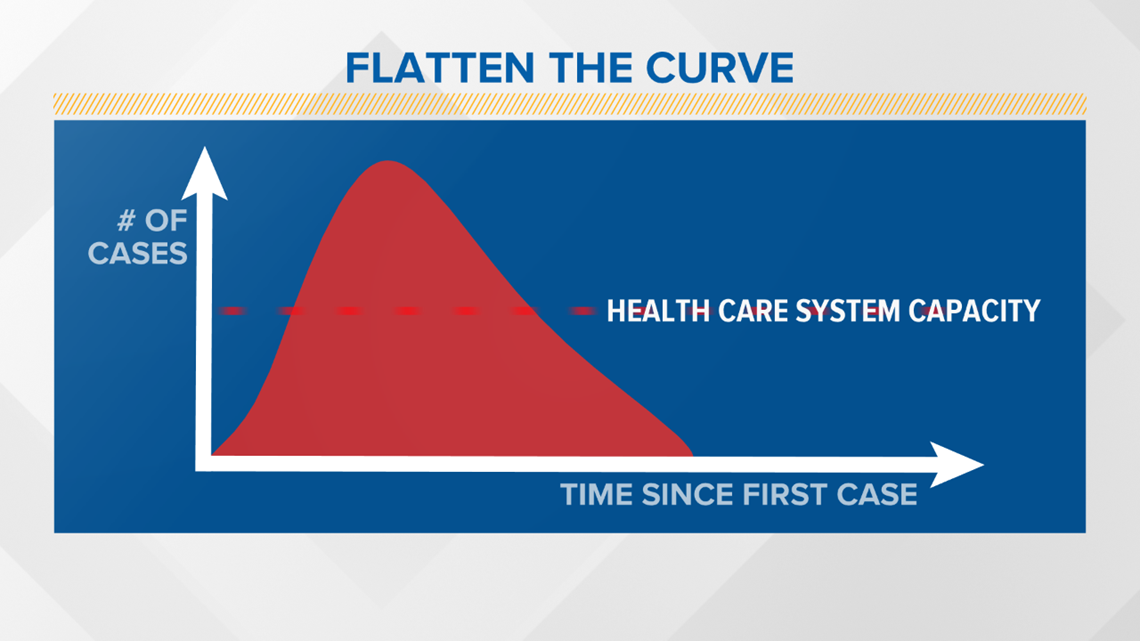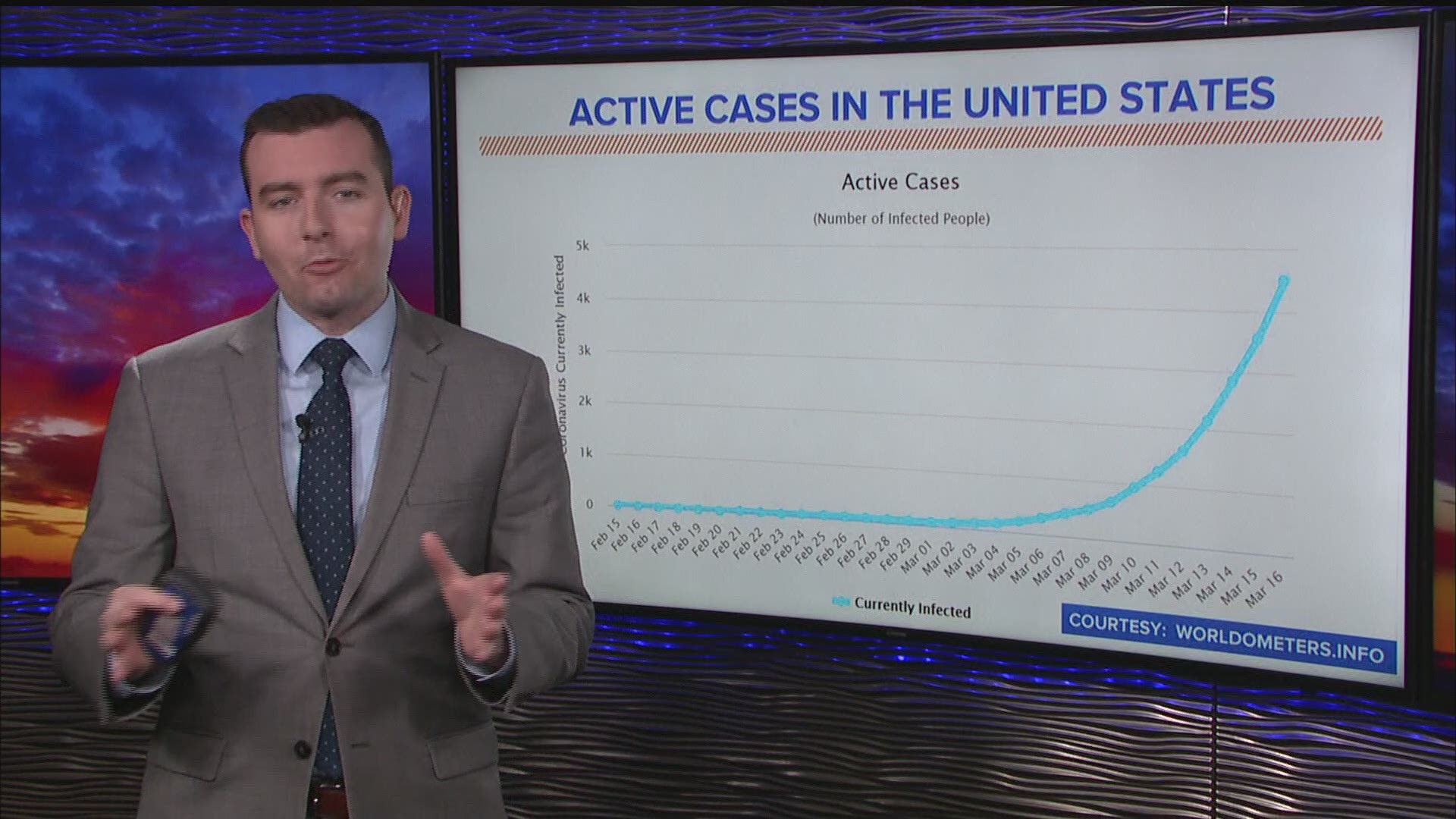MAINE, USA — You can't escape it these days; "flattening the curve" is a catch phrase used in almost every federal, state and local discussion about limiting the spread of COVID-19.
But what does it really mean?
I'm not a medical expert, but as a meteorologist, I do look at charts, graphs and use data every day. It even took me a few times to grasp what the term really means.
The idea behind "flattening" the curve first starts with understanding what our health care system can handle. The goal is to not reach or go above that capacity, as they have in countries like Italy.
It's kind of like roads in a city: If every person in the city gets in their car, leaves work and hits the roads at the same time, there will be gridlock.
If the exponential increase in the number of infections keeps up, our health care system won't be able to handle it.


The goal is to avoid that. This is where flattening the curve comes in; trying to limit the number of cases at the same time, spreading it out over a longer period of time.
The medical community tells us the best chance to flatten the curve is through social distancing.
We have done a number of stories and other explainers about this process, you can click through the links below for more:

